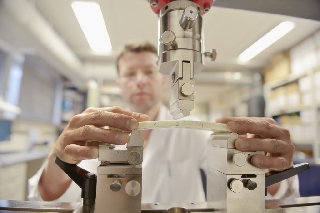
Test apparatus for short-liners and internal sleeves
Operators of waste-water systems at all times aim to achieve their refurbishing targets effectively and at the lowest possible cost. The advantage is with those who judiciously combine the various renovation and repair methods. New measuring systems now permit “before/after” comparisons, allowing the rational selection and combination of such methods. The necessary preparatory work is frequently neglected during on-site implementation, however. Repair procedures tested by IKT proved to be differingly immune to such application errors.
There has, in the past, been significant uncertainty on the part of system operators concerning
- what the various repair methods can actually achieve,
- what quality can be attained,
- and what criteria need to be taken into account in tendering procedures, award of contract and on-site supervision.
Repair procedures are used for the rapid, flexible and rational-cost repair of distributed damage, using a large bandwidth of procedures. The same also applies when renovation methods are implemented, since repair procedures are routinely used here for pre-sealing, reprofiling, connection of manholes and the integration of connecting lines. Throughout Germany, around 25 percent of drain/sewer damage is eliminated using specifically “repair” methods.
The independent and impartial IKT – Institute for Underground Infrastructure has already tested repair methods, with the following focuses, in a large range of projects.
Read more…




